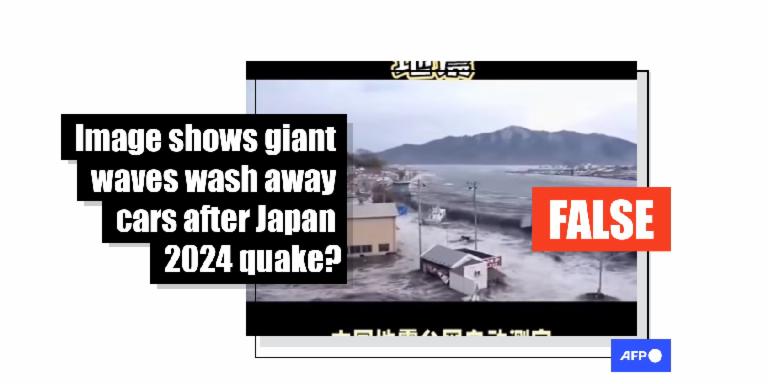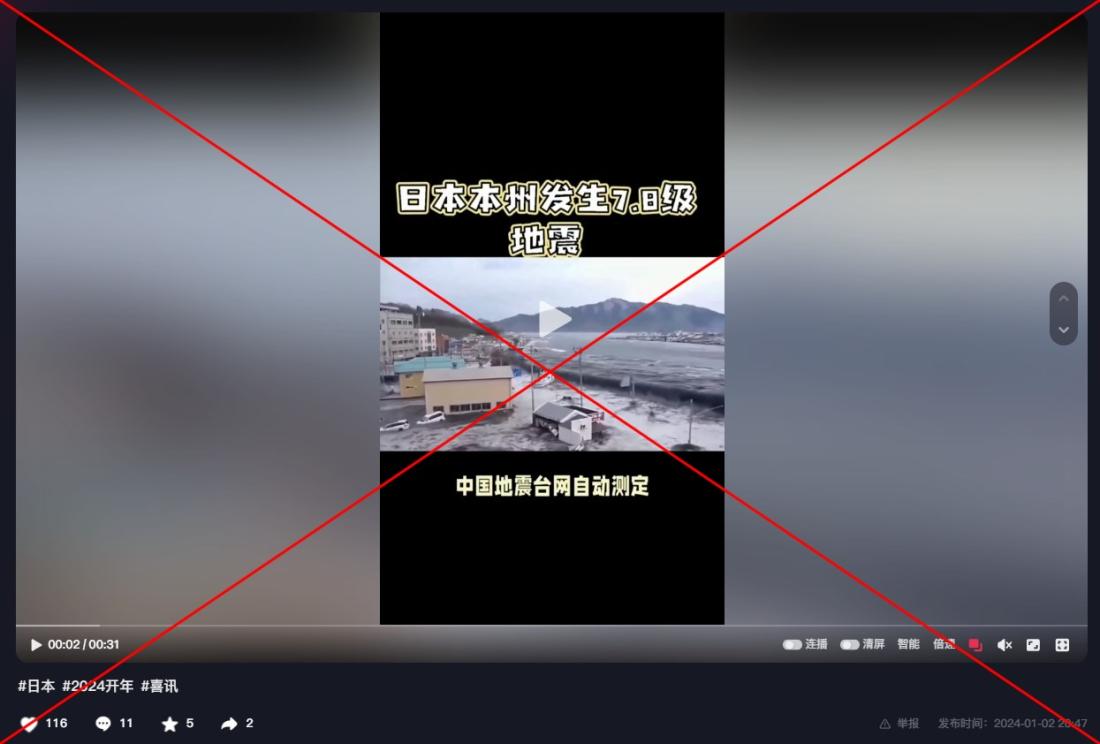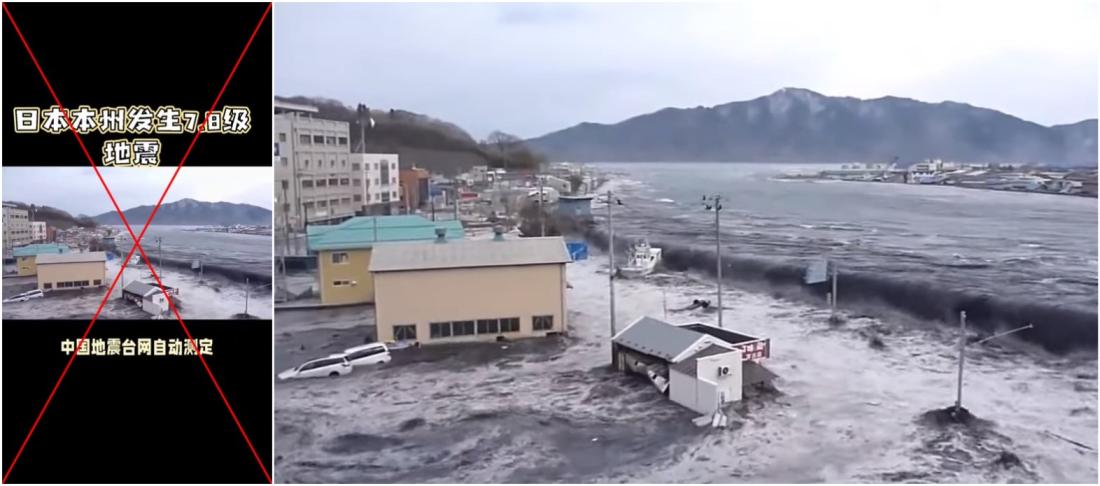
Picture shows cars washed away after Japanese quake in 2011, not 2024 jolt
- This article is more than one year old.
- Published on January 6, 2024 at 09:37
- Updated on January 6, 2024 at 09:47
- 3 min read
- By Tommy WANG, AFP Hong Kong
"A 7.8-magnitude earthquake has struck Honshu, Japan," reads the simplified Chinese text overlay of a video shared on Douyin on January 2, 2024.
It shows a picture of giant waves washing away cars before flashing a news clip about the plane collision at Tokyo's Haneda Airport a day after the earthquake.
The New Year's Day quake that struck Japan's main island of Honshu was actually 7.5-magnitude strong, according to the US Geological Survey. Japanese authorities said on January 5 that it killed at least 92 people.
The main shockwave has triggered tsunami waves at least 1.2 metres (four feet) high in Wajima, and a series of smaller tsunamis were reported elsewhere.
All around the Noto Peninsula on the Sea of Japan coast, buildings have been flattened and roads have been hit by landslides and fallen trees.

The picture has also been shared alongside a similar claim elsewhere on Douyin here and here and on another video platform, Kuaishou.
But it is old and shows a scene from the devastating 9.0-magnitude earthquake and subsequent tsunami in Japan in March 2011 that left around 18,500 people either dead or missing.
Misused tsunami image
Reverse image and keyword searches on Google and YouTube found the image shared in the posts corresponds to a frame in a video uploaded on the disaster archive website of Miyako City in eastern Japan (archived link).
The site says the video was taken in Miyako in the Iwate prefecture on March 11, 2011 (archived link).
Below is a screenshot comparison of the image in the false posts (left) and the keyframe from the video posted by the Miyako City Disaster Archive (right):

The same video can also be found in an archived channel run by the Science Film Museum, a Japan-based non-profit organisation that saves old science-related films (archived links here and here).
Its Japanese-language caption translates as: "This footage shows the huge tsunami caused by the Great East Japan Earthquake on March 11, 2011. A city employee filmed the second wave (6.5 metres) from the 5th floor of the Miyako City Hall, Iwate prefecture, showing the devastation as the tsunami overcame the four-metre breakwater and swallowed the centre of the city. The voices of the officials tell the whole story."
Using keywords and features of the buildings in the video, AFP found the location corresponds to Google Maps street view of a coastal highway near Miyako City Hall (archived link).
Below is a screenshot comparison of the image in the false posts (left) and its corresponding Google Maps street imagery (right), with similar features highlighted by AFP:

AFP has earlier repeatedly debunked falsely shared images and clips from the old disaster that have resurfaced following the recent quake here, here and here.
Copyright © AFP 2017-2025. Any commercial use of this content requires a subscription. Click here to find out more.
Is there content that you would like AFP to fact-check? Get in touch.
Contact us
